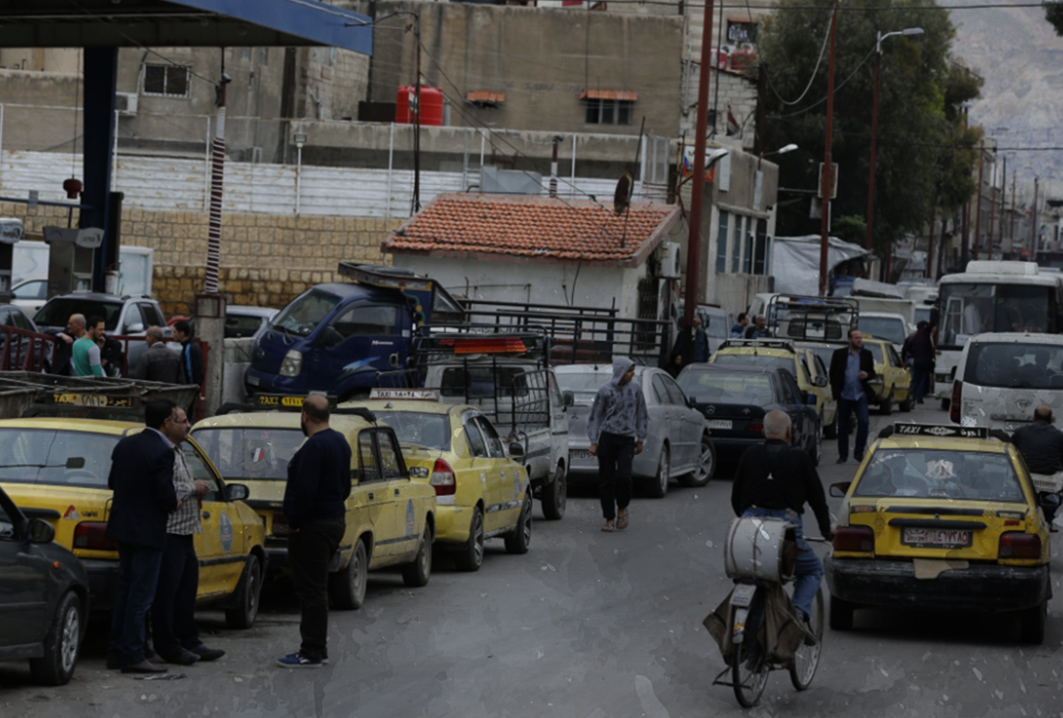Situation Update
May 5, 2019
Since March 10, areas under the control of the Government of Syria (GoS) have experienced major economic problems, one of which is the fuels crisis in Syria. This has prompted the GoS to take action by tightening fuel allocations and quantities for each person through a smart card.[1] It has also priced gasoline that is not subsidized by the smart card system at 600 SYP per liter, and cut the public sector’s fuel allocations by half. However, all of these measures had very limited impact on availability of fuel. In conjunction with the severe shortage of gasoline, Syrian markets have witnessed a rise in the dollar’s exchange rate, reaching to 560 SYP for $1 USD.
This report attempts to illuminate the social and economic impact on the population in areas controlled by GoS.
The following is a summary of the effects of the loss of gasoline and the devaluation of the Syrian pound against foreign currencies, on communities:
- There are high transport costs as well as a lack of transportation in general.
- There is difficulty accessing medical centers, and semi-disruption of the movement of ambulances, including vehicles of the Syrian Red Crescent. This particularly affects pregnant women, children and the elderly.
“You cannot imagine how oppressed people feel,” says S.A
- Traffic in Damascus has been almost completely disrupted.
- Relief organizations suspended field work for a whole week due to the gasoline crisis. They resumed their work following the easing of the gasoline crisis in Damascus. However, this crisis has not been resolved yet in some provinces, such as Suweida.
- Employees had difficulty accessing their premises because a large number of public service vehicles stopped working due to lack of gasoline and diesel.
“Do not believe that gasoline is not available. People can secure gasoline if they pay large sums or deal with Syrian security agents,” says Y.S.
- There are rising prices of basic commodities, particularly oil, rice, coffee, tea, meat, vegetables and water. The rate of increase in commodity prices is 100%, compared to the beginning of the year. In the current month, the price increase has reached 30%.
- According to the latest statement by the Ministry of Transport, the price of the first 100 liters of gasoline is 225 SYP, before rising to 375 SYP per liter.
- This crisis has particularly affected displaced people’, who are already vulnerable and struggling with high housing costs.
“People buy vegetables that are not fresh; nobody buys meat. There are good offers on all the products, but no one is able to buy.” Says A.D. owner of a vegetable shop in Damascus
Conclusion
As a result of problems highlighted, the Syrian Civic Platform (SCP) predicts that the continuation of the economic crisis will lead to economic recession as the month of Ramadan begins, due to higher food prices and the poor purchasing power of the Syrian citizen, whose average income does not exceed $100 USD per month.
In addition, the economic crisis will increase the suffering of Syrians, especially the displaced. This will push more children to beg and collect garbage, as well as engage in jobs that are dangerous or not enough for basic survival. Furthermore, it may lead to increased malnutrition and negative coping mechanisms.
[1] The “smart card” is a project implemented by Takamol Holding. The Ministry of Oil and Mineral Resources has worked on it following three stages; the first of which was in July 2014 and it focused on government mechanisms. The second stage was in 2016, focusing on the private vehicles, while the third phase was launched in 2017 and targeted the distribution of heating oil to families.

